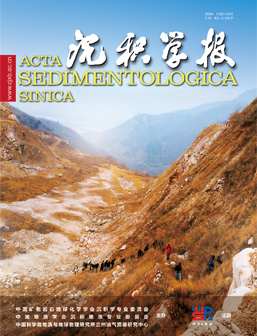Shelf delta depositional model influenced by different tidal ranges-Inspiration from Delft 3D numerical simulation
doi: 10.14027/j.issn.1000-0550.2024.123
- Received Date: 2024-07-23
- Available Online: 2025-03-04
-
Key words:
- Delta /
- Tidal influence /
- Quantitative deposition process /
- Numerical simulation /
- Delft 3D
Abstract: Tidal forces have an important influence on the form and scale of Marine shelf deltas and the development and evolution of branch channels. The quantitative control mechanism of different amplitude tidal ranges on the dam body and branch channels of continental shelf deltas is a hot scientific issue. In this paper, a single factor control method is used to analyze the evolution of the key geologic bodies in the continental shelf delta under different tidal ranges by using Delft 3D hydrodynamic simulation software to set up four control groups: no, small, medium and spring difference. The experimental results show that the downcut depth and width of the branch channel decrease with the increase of the flow distance when there is no tidal effect. When tidal action is added, the number of distributary channels decreases with the increase of tidal range, but the downcut degree and width of distributary channels increase. The width-to-depth ratio of the branch channel ranges from 2 to 10 when there is no tidal action, and decreases to 0 when there is low tidal range. Under the influence of middle tidal range and spring tidal range, the width-to-depth ratio of the branch channel corresponds to 0 to 3 and 2 to 4 respectively. The results show that tidal action is beneficial to increase the broad-to-thickness ratio of sand body, and the delta morphology changes more stable with the increase of tidal range. The number of branch channels in the delta under the influence of tides decreases significantly, which is mainly due to the periodic influx and retreat of tides in the lateral direction, which promotes the formation of lateral channels and tidal channels. Under the influence of middle-spring difference, the lateral migration distance of the branch channel is shorter, the branch channel is more stable, and the dam body is more isolated from each other, which provides an important reference for reservoir configuration analysis of similar underground sediments.
| Citation: | Shelf delta depositional model influenced by different tidal ranges-Inspiration from Delft 3D numerical simulation[J]. Acta Sedimentologica Sinica. doi: 10.14027/j.issn.1000-0550.2024.123 |






 DownLoad:
DownLoad: